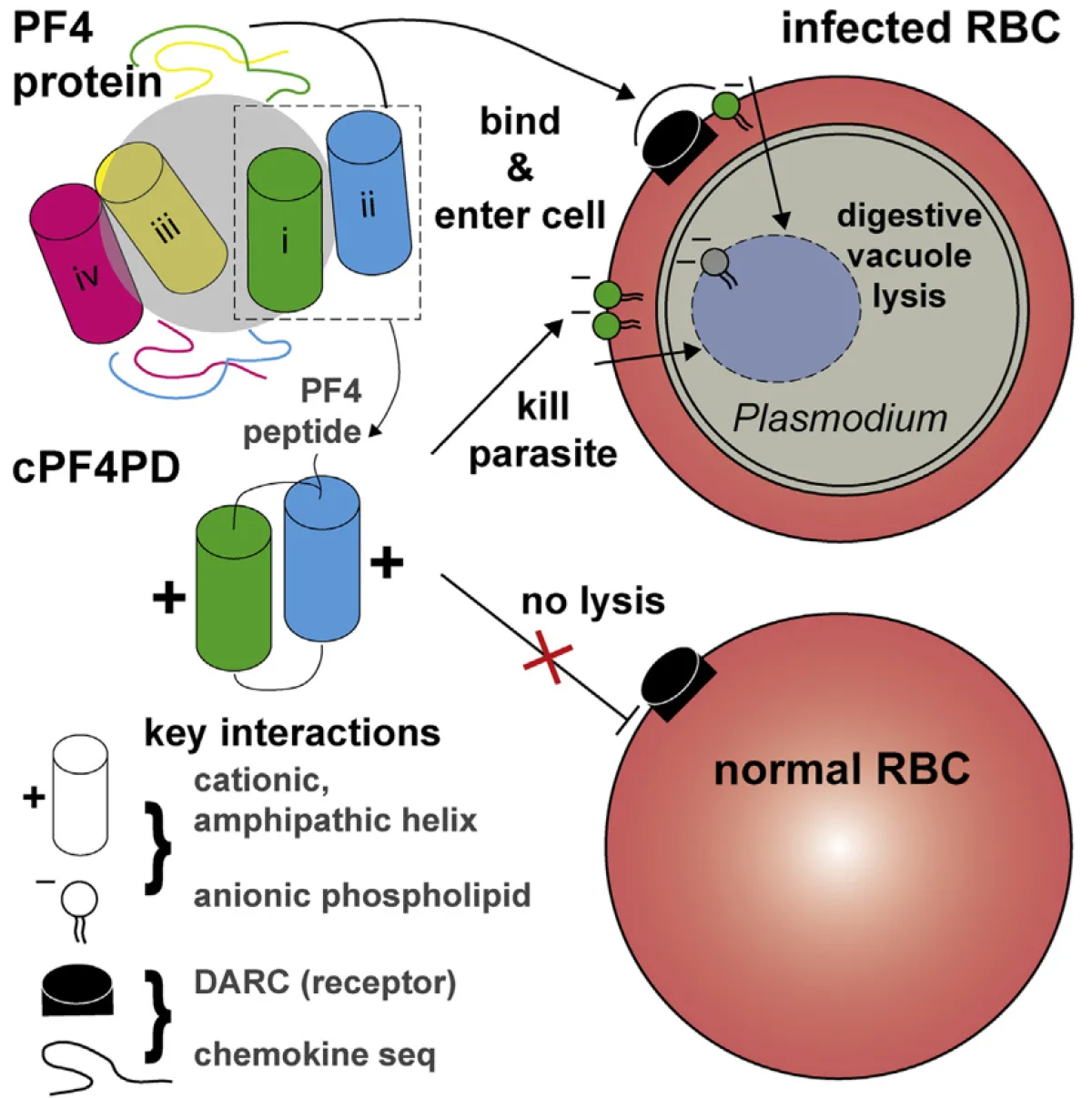Developing host-inspired molecules for treating malaria
We're developing PDIP, a peptide derived from PF4, to combat malaria by targeting and killing parasites inside infected cells; current efforts focus on optimizing its structure and combining it with existing drugs for enhanced efficacy.
Research themes
Project status
Content navigation
About
We have taken inspiration from the unique anti-plasmodial properties of PF4 to generate a new drug-like peptide molecule and aim to develop this into a novel anti-malarial treatment. Our lead molecule, called PDIP (platelet factor 4 dimer internalisation peptide) possesses specific and potent activity distinct from other antimalarial drugs, whereby it translocates and accumulates inside Plasmodium-infected cells and kills the parasite by inducing lysis of the digestive vacuole (DV), an organelle that degrades and recycles the host cell contents. This killing activity is attributed to a paired amphipathic alpha helical domain of PF4 which enables it to interact and cross cell membranes; PDIP is a cyclised alpha-hairpin peptide that replicates this domain (Lawrence et al. 2018; Palombi et al. 2023).
Our current goals are to investigate PDIP structure-function relationships to understand the parasite killing mechanism and optimise its potency. Working with collaborators, we are producing peptide-drug conjugates (Palombi et al. 2023), where PDIP is fused to antimalarial drugs, to re-functionalise and enhance the activity of the peptide and improve drug effectiveness.

Related papers
Lawrence, N., A. S. M. Dennis, A. M. Lehane, A. Ehmann, P. J. Harvey, A. H. Benfield, O. Cheneval, S. T. Henriques, D. J. Craik, and B. J. McMorran. 2018. 'Defense Peptides Engineered from Human Platelet Factor 4 Kill Plasmodium by Selective Membrane Disruption', Cell Chem Biol, 25: 1140-50.e5.
Palombi, I. R., N. Lawrence, A. M. White, C. L. Gare, D. J. Craik, B. J. McMorran, and L. R. Malins. 2023. 'Development of Antiplasmodial Peptide-Drug Conjugates Using a Human Protein-Derived Cell-Penetrating Peptide with Selectivity for Infected Cells', Bioconjug Chem, 34: 1105-13.

